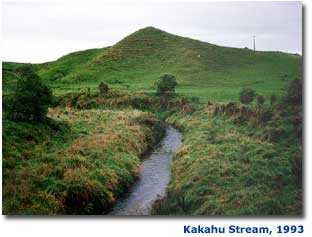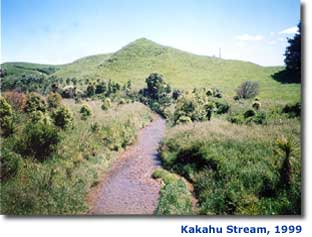Fencing streams and rivers
Preventing stock access to waterways, such as streams and rivers, is an important part of good farm management. Fencing waterways helps prevent stock losses and injuries in waterways, and can save you money. For example, the loss of a cow worth $1000 in a waterway is equivalent to the cost of fencing about 650 metres of stream edge with a single wire electric fence. Find out about the different options for fencing waterway margins.

On this page: Fencing waterway margins, Find out more
The area forming the ‘boundary’ or buffer zone between a waterway and land is called the riparian, or waterway margin. This area forms a crucial buffer between land use and a waterway.
Waterway margins are often the last opportunity to keep farm pollutants out of waterways, so it’s important we manage them well.
Fencing waterway margins

By simply changing the land use of a stream bank you can have a major influence on water quality. To make this change you will have to consider cost of fencing and how much stream margin will have livestock excluded.
Generally more is better – a higher quality fence will have fewer management and maintenance requirements. Similarly, a wider margin provides a better filter zone for run off and offers more opportunity for vegetation management such as native planting.
Depending on what may be the best fit for your situation, four options are described below. To cost different fencing and planting actions for streams on your farm, use our online calculation sheet.
We recommend you contact one of our land management officers for on-site advice, and to find out more about possible sources of funding.
1. Fencing close to the water’s edge
Keeping stock out of waterways is the best ‘first step’ you can take to improving waterways and water quality. This is because:
- there is less dung being deposited directly into the waterway
- there is less erosion of the stream bank, so it’s more stable and there’s less sediment going into the waterway.
2. Fencing and leaving a grassed strip
Grasses, native sedges and rushes are effective filters for removing sediment, bacteria and nutrients from farm runoff. To be effective, grassed strips need to be at least 1 to 2 metres wide on flat land, and wider on rolling land. The steeper the land, the wider the grassed strip needs to be to be effective.
By leaving a grassed strip you’ll get the benefits outlined above, plus:
- better water quality – sediment, phosphorus and faecal matter are filtered out of surface runoff by the grass.
3. Fencing and planting native plants
Native plants growing along stream edges benefit the whole stream environment. To be effective, you’ll need a margin of at least five metres wide. Native plants provide the benefits outlined in 1. and 2. above, and also:
- improve water quality and habitat for native fish – including whitebait species
- provide habitat for birdlife – including ducks
- give shade and shelter for stock on the other side of the fence
- are an attractive feature.
4. Fencing stock out of drains, seeps and wetlands
Keeping stock out of drains, seeps and wetlands reduces stock losses from bogging and improves stock management. Excluding livestock allows these wet areas to function as natural filters and groundwater denitrification zones. Wetland plants growing in these areas can also benefit your farm by:
- filtering nitrogen and bacteria from farm runoff
- trapping sediment and phosphorus suspended in water – improving the water quality
- soaking up excess floodwater – slowing the flow of water off your land and reducing flood peaks.
Find about more about fencing drains, seepage areas and wetlands. Check out our information on "managing wetlands".
Find out more
Fencing waterway margins is only part of the ‘picture’ when protecting waterways. Find out more about fencing drains, seeps and wetlands.
Find out more about nutrient management.
Check out our information on applying effluent to land.




To ask for help or report a problem, contact us
Tell us how we can improve the information on this page. (optional)